Foraging For Edible Plants In Your Backyard.
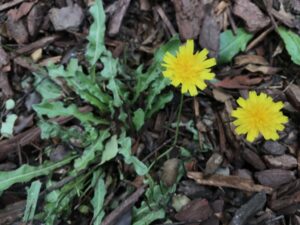
Foraging foods and edible wild plants are sometimes closer than we think.
Edible plants don’t just have to be in the wilderness. They could be growing along the side of your house, at the local park, or in the overgrown block down the road.
Foraging edible plants and palatable introduced weeds in the back yard of suburbia is sometimes forgotten, as most plants that pop up are viewed as weeds. They generally are not thought of something that could possibly be edible.
If it isn’t nice green grass, the favorite shrub or shady tree, unfortunately it generally gets cut down, or poisoned in the garden. Before the wild weed gets the chop, check and test your foraging knowledge and see if you can identify the plant. Is it edible?
What useful plants, both native and introduced can be found locally around your area?
Here are some plants in my back yard and a basic look at them. I’m sure if I look harder, or at different times of year, there are probably another one or two plants that I can forage.
A lot of these plants can be found in North America, United Kingdom, Canada, Europe and Asia, just to name a few places, regions and countries.
1. Wood sorrel. (Oxalis pes-caprae.) Also can be known as, soursob, Bermuda buttercup, Yellow Wood Sorrel, African wood-sorrel, sourgrass.
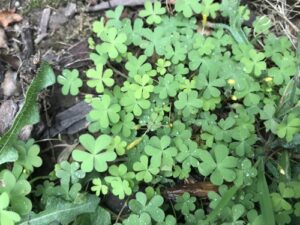
A pleasant lemony sour taste that is refreshing. My children love eating this plant, (And me.) when we go camping. So I was excited to find this herb in my backyard. You can add it to salads or make a tangy drink with it. You can also eat the flower and processed roots.
Because of the high oxalic acid content, it is suggested to limit the intake of it.
I am keen to try putting some wood sorrel as an ingredient when cooking baked trout. It should act like a lemon substitute when cooking it. Plus I also get to eat the healthy greens the wood sorrel provides.
2. Mallow. (Malva species. Malva parviflora, Malva neglecta.) Also called cheese weed, Little Mallow. The Malva species contains many types.
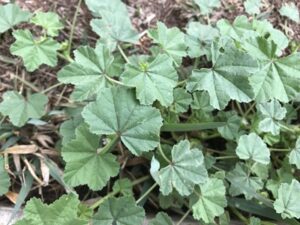
The leaves can be used as a spinach substitute. The leaves don’t have a lot of taste, but this can be a positive and take on the flavoring of the dish. The flowers, roots are all edible.
I just recently added some mallow leaves to a curry lamb shank with split peas. Yum!
3. Sheep sorrel. (Rumex acetosella.) Also known as Sour dock.
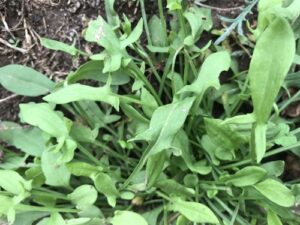
Another favourite of my kids, it tastes the same as wood sorrel (Oxalis.) and has the tangy sour lemon taste. It can be eaten raw or cooked.
The distinctive leaves makes the plant easy to identify, with an arrow head shaped with a pair of lobes.
4. Dandelion and dandelion plant look a likes. Dandelion. (Taraxacum.) Cat’s-ears, (Hypochoeris radicata L.) Hawkbit (Leontodon taraxacoides.)

There are a couple of plants which look like dandelions. Luckily they have similar characteristics and are edible as well. With bright yellow flowers, the leaves, flowers and roots can be eaten, although the leaves can be quite bitter. Especially with the older leaves.
The root has to be processed down and can be used as a coffee type substitute.
5. Sow thistle (Sonchus oleraceus.)
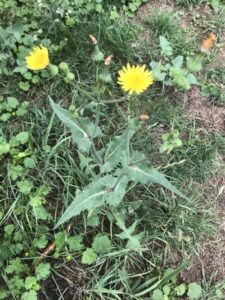
It looks like dandelion, but will grow higher. It can be used in salads or cooked as a spinach substitute.
6. Plantain (Plantago.) Also called Ribwort.
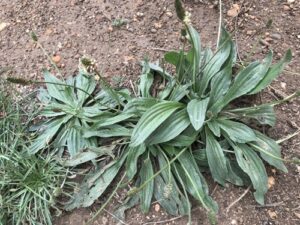
The leaves have veins or ribs running down the leaves. There are several varieties like narrow leaf, broadleaf leaf and buckhorn plantains.
Some leaves can be bitter depending on age and plantain species, but the leaves and seeds are edible. (Plantain can also be referred to a type of cooking banana as well.)
Wild edible plants close by.
Just a few miles away, not far from my backyard, I have noticed all different foraging plants like; prickle pear cactus, (Opuntia.) and cat-tail, (Typha. It might also called Reedmace in Britain and Bulrush in Australia.) to name a few species.
Other wild edible plants, fruits, nuts like burdock, oak trees, hawthorn bush, stinging nettle, fennel, thistles, and olive trees are also not far away.
A lot of wild edible weeds and plants can be added to stews, soups, salads, smoothies or garnishes. Check that they are safe and do not include or eat anything you are not sure of. If in doubt leave it out and be safe.
Apart from foraging, some of these plants are useful for fire-lighting and making cordage for camping, bushcraft and survival skills.
Seasonal wild edibles.
At different times of the year some will plants will appear everywhere, later on in the year, they will disappear and another edible will take hold.
Within several miles from home I am lucky enough to have when in season, blackberries (Rubus fruitcosus.) Yummy, fresh blackberries and blackberry pie.
Awareness when foraging for plants and safety.
Now some of these wild plants are in waterways that get run off from the vehicle traffic. So I wouldn’t eat some of these plants if they are in drains and close to the road or industrial estates as the pollution might be bad.
Some plants and weeds can get sprayed by the council or shire. Or the neighbor might be using pesticides and weed killers, so be aware and mindful of that. Only forage in places you know that are free of pollutants.
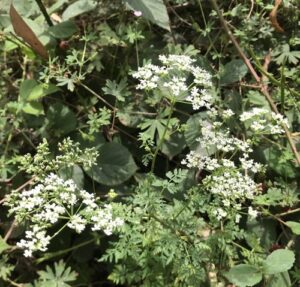
Also not every weed, introduced species or native plant is edible, some are poisonous and toxic like Poison Hemlock (Conium maculatum.) as above image, which is only a few miles away from me. So please be safe and only pick plants that you are 110% sure are safe.
Food from plants in a survival situation.
As well as providing extra tasty ingredients to a dish at home or for camping, some wild edibles can provide enough food for the whole meal.
But if we take the foraging concept further into a true survival situation, we have to be careful the energy we used (Calories out.) harvesting and preparing the wild edible plant isn’t more than we get from consuming them. (Calories in.)
A lot of times foraging plants may not provide the amount of calories and protein our bodies need. However sometimes the extra vitamins, minerals can be valuable, as well as a morale boost having something on the plate, or hot food. A lot of the edible weeds are easy to see and harvest as a bonus.
Visit Ideas For Camping Meals for some meals and ideas that you could add some wild edibles ingredients to.
Warning – As always triple check the plant is 100 percent identified. Never eat what you are not sure about.
Wash thoroughly any foraged food and cook.
Summary – Foraging for edible plants in your back yard.
Is there a fruit, tuber or green growing in your backyard?
Foraging is a great way to add some tasty and different ingredients to our meals. And the good thing, a lot of these wild edible plants are in the back yard, or just a few miles away.
Next time you are in the park, or out the back yard, take a close look at what edible plant is around.
Whether it is for a full wholesome meal, or perhaps some herbs or greens to put in the salad or smoothie. What does nature provide you at your doorstep?
